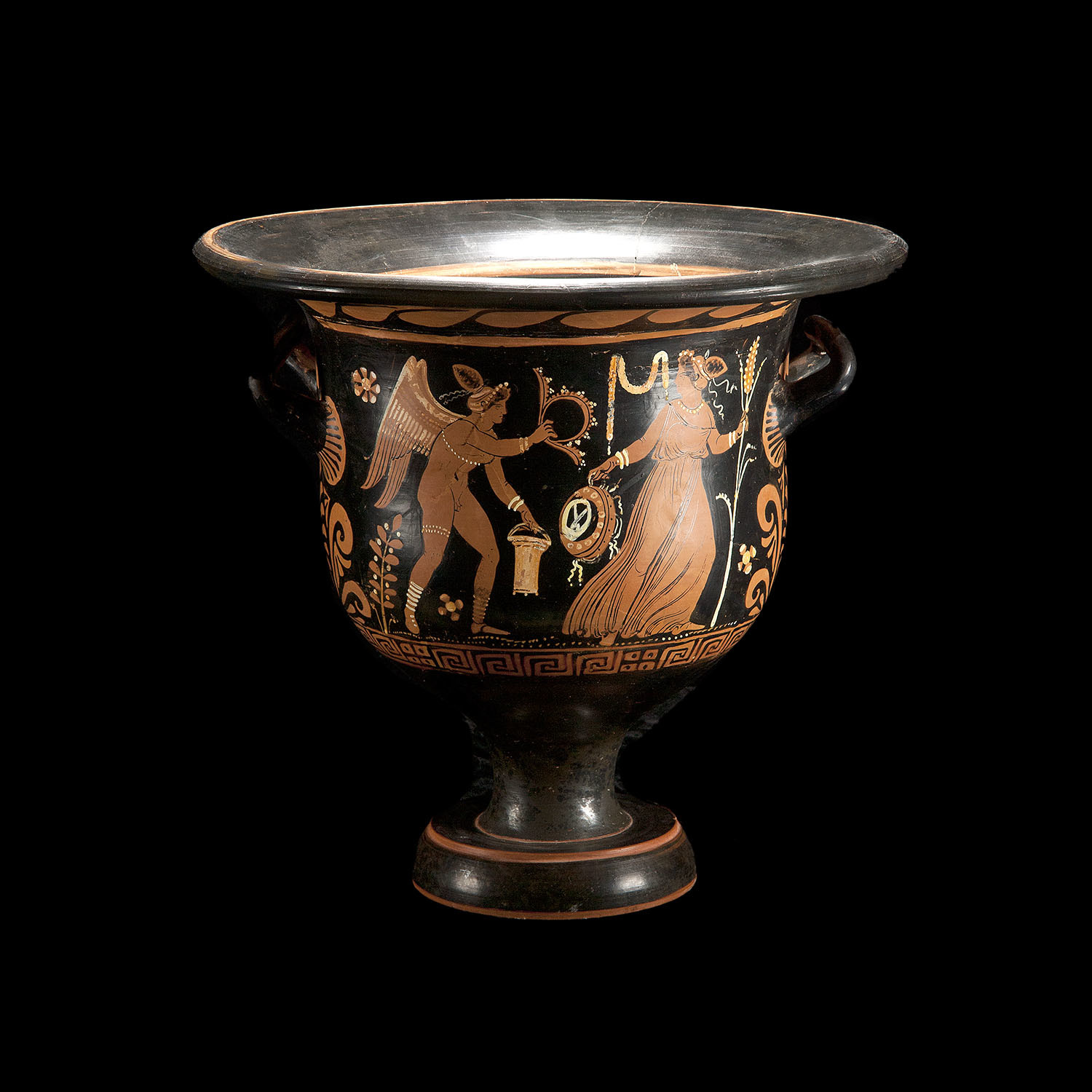- Thread starter
- #681
The city of Larsa
The city of Larsa was an ancient Sumerian city in southern Mesopotamia, known as a prosperous trade center on the Persian Gulf and a key player in the Early Dynastic Period. It was one of the major cities of Sumer, alongside Eridu, Uruk, and Ur. Larsa gained prominence under the rule of kings like Rim-Sin and was the last stronghold opposing Hammurabi of Babylon before its conquest. The city was closely associated with the worship of deities Nanna and Šamaš, and it played a significant role in the political and economic landscape of southern Mesopotamia.
Larsa, one of the ancient capital cities of Babylonia, located about 20 miles (32 km) southeast of Uruk (Erech; Arabic Tall al-Warkāʾ), in southern Iraq. Larsa was probably founded in prehistoric times, but the most prosperous period of the city coincided with an independent dynasty inaugurated by a king named Naplanum (c. 2025–c. 2005 bc); he was a contemporary of Ishbi-Erra, who founded a dynasty at the rival city of Isin. Naplanum was succeeded by a line of 13 kings, many of whom exercised great authority in Babylonia and represented the new hegemony of Semitic Akkadian elements that superseded the Sumerians.
Isin and Larsa seem to have existed in a state of armed neutrality for more than a century during the time when each city was consolidating its rule. Isin was initially recognized as dominant at Ur, but business records on clay tablets found in the latter city show that by the time of the fifth and sixth kings of Larsa, Gungunum (c. 1932–c. 1906 bc) and Abisare (1905–1895), Larsa was already on the road to dominance. The 12th king of the dynasty, Silli-Adad (c. 1835), reigned for only a year and was then deposed by a powerful Elamite, Kutur-Mabuk, who installed his son Warad-Sin (1834–23) as king. This act apparently caused little disruption in the economic life of Larsa, and this was in fact a most prosperous period, as many thousands of business documents attest. Agriculture and stock breeding flourished; much attention was given to irrigation; and long-distance trade connected the Euphrates with the Indus valley through a commerce in hides, wool, vegetable oil, and ivory. Under Warad-Sin’s son Rim-Sin (1822–1763), the arts, especially the old Sumerian scribal schools, received great encouragement. The days of Larsa were numbered, however, for Hammurabi of Babylon, who had long been determined to destroy his most dangerous enemy, defeated Rim-Sin in 1763 bc and substituted his own authority for that of Larsa over southern Mesopotamia.
The brief excavations conducted in Larsa in 1933 by André Parrot revealed a ziggurat, a temple to the sun god, and a palace of Nur-Adad (c. 1865–c. 1850 bc), as well as many tombs and other remains of the Neo-Babylonian and Seleucid periods.
The city of Larsa was an ancient Sumerian city in southern Mesopotamia, known as a prosperous trade center on the Persian Gulf and a key player in the Early Dynastic Period. It was one of the major cities of Sumer, alongside Eridu, Uruk, and Ur. Larsa gained prominence under the rule of kings like Rim-Sin and was the last stronghold opposing Hammurabi of Babylon before its conquest. The city was closely associated with the worship of deities Nanna and Šamaš, and it played a significant role in the political and economic landscape of southern Mesopotamia.
Larsa, one of the ancient capital cities of Babylonia, located about 20 miles (32 km) southeast of Uruk (Erech; Arabic Tall al-Warkāʾ), in southern Iraq. Larsa was probably founded in prehistoric times, but the most prosperous period of the city coincided with an independent dynasty inaugurated by a king named Naplanum (c. 2025–c. 2005 bc); he was a contemporary of Ishbi-Erra, who founded a dynasty at the rival city of Isin. Naplanum was succeeded by a line of 13 kings, many of whom exercised great authority in Babylonia and represented the new hegemony of Semitic Akkadian elements that superseded the Sumerians.
Isin and Larsa seem to have existed in a state of armed neutrality for more than a century during the time when each city was consolidating its rule. Isin was initially recognized as dominant at Ur, but business records on clay tablets found in the latter city show that by the time of the fifth and sixth kings of Larsa, Gungunum (c. 1932–c. 1906 bc) and Abisare (1905–1895), Larsa was already on the road to dominance. The 12th king of the dynasty, Silli-Adad (c. 1835), reigned for only a year and was then deposed by a powerful Elamite, Kutur-Mabuk, who installed his son Warad-Sin (1834–23) as king. This act apparently caused little disruption in the economic life of Larsa, and this was in fact a most prosperous period, as many thousands of business documents attest. Agriculture and stock breeding flourished; much attention was given to irrigation; and long-distance trade connected the Euphrates with the Indus valley through a commerce in hides, wool, vegetable oil, and ivory. Under Warad-Sin’s son Rim-Sin (1822–1763), the arts, especially the old Sumerian scribal schools, received great encouragement. The days of Larsa were numbered, however, for Hammurabi of Babylon, who had long been determined to destroy his most dangerous enemy, defeated Rim-Sin in 1763 bc and substituted his own authority for that of Larsa over southern Mesopotamia.
The brief excavations conducted in Larsa in 1933 by André Parrot revealed a ziggurat, a temple to the sun god, and a palace of Nur-Adad (c. 1865–c. 1850 bc), as well as many tombs and other remains of the Neo-Babylonian and Seleucid periods.




